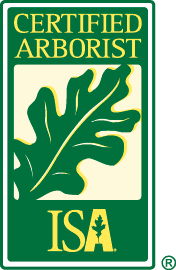Sadly, it doesn’t grow just to satisfy your ambitions. Plants thrive only when you expend effort on them. And not just any kind. We’re talking about strategic, planned, localized efforts. That’s the ticket to a healthy, full garden plentiful with veggies, fruits, and herbs of your liking.
If all that research sounds exhausting, don’t fret. We’ve sifted out the fluff to give you the bare bones basics of planning your garden schedule throughout the year. A gift from us to you, use these tips and tools to get you started planning your spring and fall harvests!
Get in the Zone
From Georgia’s splendrous, juicy peach to Washington’s polished, tart apples, there’s a reason various states are known for what they harvest. In a nutshell, fruits and vegetables prefer varying levels of humidity, soil types, rainfall, and so on. So how do you know what will work for your garden? The first step is to understand your hardiness zone. Plant hardiness refers to the ability of plants to withstand cold temperatures. The USDA provides a map by zipcode to make it easy. Once you know which zone your garden is in (PA is mostly 5b and 6a), you can narrow down which plants will grow well in your garden. We’ve more to cover in regard to planning, but we found this in-depth guide to help you decide what to plant.
Mark your Calendar
It seems like we just unpacked our fall sweaters, but believe it or not, it’s time for gardeners like you to think spring blooms, not scarecrows and pumpkins. In light of the season, let’s focus on when you’ll need to pull out the gloves, rakes, and shovels for spring planting. Traditionally, the last spring frost (roughly mid-April in southern Pennsylvania), is used as an indicator of when to plant various crops. This online planning calendar uses your city and state to give you back a free guide for spring and fall planting by crop type, including indoor preparation, time to harvest, transplanting suggestions, and more. As another helpful tool, this month by month garden to-do list, localized to zones 5-6, is one of our favorite free finds. For a surefire plan, start marking your calendar now for important dates.
Know thy Veggies
The need for individualized care for each vegetable within a garden is often overlooked. The result is less than satisfactory looking (and tasting) results. Though spring is what we’re focusing on, these tips apply for autumn veggies, too. Understanding a crop’s cold hardiness (exactly when it should be planted and harvested, in other words) puts you ahead of the game. But understanding other unique needs will produce an abundant selection of ripe goodies. Once you’ve planted, learn what’s needed for vegetable maintenance on websites like this.
There’s an App for that?
They say technology is making everything easier. Thankfully for gardeners, we’re no exception! That’s right, there are apps out there than can make your garden planning easier. For the serious vegetable, fruit, and herb gardener wanting a virtual layout, localized advice, and personalized planting reminders, there’s Garden Plan Pro. If you’re just interested in a handful of plants for a small garden, there’s Foolproof Plants for Small Gardens. For those focused on looks, there’s iScape, helping you visualize a garden design. And, our personal favorite, Garden Compass. It gives you basic data about a plant’s needs and, as an added bonus, you can take a picture of a plant, email it to the team, and they’ll identify it and provided localized, additional details for free. The best part? Most apps are available on mobile, so you can take your handheld plan outside with you.
Goodnight, Soil
If you’re basking in an autumn harvest of pumpkins and squash, we applaud you. But don’t let the excitement cause you to forego the preparation steps crucial to produce similar success in the spring. Putting the garden “to bed” is one of the best ways to improve spring soil health and plant growth. Meant to protect exposed soil from harsh winter elements, it involves covering the garden bed with crop debris and compost. This helps to do two things: protect the soil from winter and ensure nourished soil (fed by the microbes in the compost) in the spring.
Think of Spring
Lucky for you, Pennsylvania is located in a sweet spot for gardeners. Not so far north that you freeze all winter, and not too deep south that humidity and mold frustrate plant growth, and monsoons and hurricanes are avoided almost entirely. Not to mention, the natural neutrality of the soil pH and it’s lush texture are near perfect. All these benefits make your job enjoyable. With the onset of winter, grab a hot drink and enjoy mapping your spring garden and schedule important dates!
Remember, a garden is just one piece of the puzzle when it comes to your yard. Keep in mind that a beautiful lawn and landscape make the picture complete! Go Green provides services like tree and shrub maintenance that would help accentuate the garden. Or, for a more enjoyable gardening experience, we can get rid of flea or tick problems for good. A healthy landscape makes a happy homeowner, and now is the time to plan for spring!













